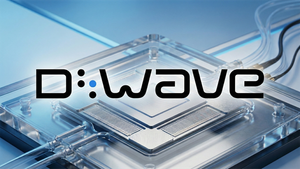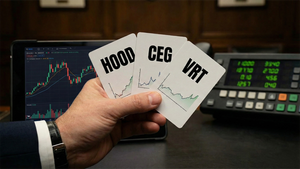
American motorcycle manufacturing company Harley-Davidson (NYSE: HOG) fell short of the market’s revenue expectations in Q1 CY2025, with sales falling 23.1% year on year to $1.33 billion. Its non-GAAP profit of $1.07 per share was 38.7% above analysts’ consensus estimates.
Is now the time to buy HOG? Find out in our full research report (it’s free).
Harley-Davidson (HOG) Q1 CY2025 Highlights:
- Revenue: $1.33 billion vs analyst estimates of $1.35 billion (23.1% year-on-year decline, 1.2% miss)
- Adjusted EPS: $1.07 vs analyst estimates of $0.77 (38.7% beat)
- Adjusted EBITDA: $192.1 million vs analyst estimates of $155.2 million (14.5% margin, 23.8% beat)
- Operating Margin: 12.1%, down from 15.2% in the same quarter last year
- Free Cash Flow Margin: 8.4%, up from 3.3% in the same quarter last year
- Motorcycles Sold: 38,601, down 19,071 year on year
- Market Capitalization: $3.03 billion
StockStory’s Take
Harley-Davidson’s first quarter results reflected the challenges of a soft motorcycle market, with revenue missing Wall Street expectations due to lower sales volumes, especially in North America. CEO Jochen Zeitz attributed much of the shortfall to weak consumer confidence and the ongoing macroeconomic uncertainty, while also highlighting efforts to maintain tighter dealer inventory levels and a strong product mix. Zeitz said, “Global retail sales were down 21% in Q1 and down 24% in North America, softer than we expected primarily in the US market, driven by historically low levels of consumer confidence.”
Looking forward, management withdrew its previous 2025 financial guidance, citing the unpredictable tariff environment and persistent economic headwinds. Zeitz emphasized the company’s cautious approach, stating, “We are withdrawing our previous 2025 guidance until there is more clarity over economy and tariff landscape.” Harley-Davidson plans to focus on cost controls, new product launches, and supply chain adjustments, but management made clear that macro and policy uncertainty remain the main factors influencing its near-term outlook.
Key Insights from Management’s Remarks
Harley-Davidson’s leadership focused on managing through a challenging demand environment and highlighted several business adjustments to address ongoing volatility.
- North America demand softness: The significant decline in U.S. sales was attributed to low consumer confidence and delayed purchases of discretionary products, as indicated by proprietary research showing 60% of non-owners and half of current owners are deferring purchases.
- Dealer inventory discipline: Management prioritized reducing dealer inventory, with global wholesale shipments down 33% and U.S. dealer inventory down 23% year over year, as part of a strategy to avoid oversupply during weak demand periods.
- Model year launch timing shift: Harley-Davidson is moving major product launches to later in the year, aligning marketing efforts with peak riding season to maximize effectiveness and support dealer sales.
- Entry-level and classic product expansion: The company confirmed plans to introduce new entry-level motorcycles and reintroduce an iconic classic model for both U.S. and international markets, aiming to reach more price-sensitive and new customers.
- Tariff and supply chain mitigation: Management detailed ongoing actions to address tariff impacts, including shifting sourcing away from China and engaging with policymakers, while noting that the rapidly changing policy environment remains a major risk to profitability.
Drivers of Future Performance
Management’s outlook emphasizes caution, with near-term performance hinging on macroeconomic conditions, tariff developments, and the impact of strategic product and operational changes.
- Tariff impact and mitigation: Future results will be shaped by the evolving global tariff landscape, particularly high duties on Chinese components; Harley-Davidson is working to diversify its supply chain and engage with governments to reduce exposure.
- New product introductions: Launches of smaller, entry-level motorcycles and a classic model are expected to broaden the customer base and support demand recovery, provided economic conditions stabilize.
- Cost control and operational efficiency: Continued focus on productivity programs, inventory management, and disciplined marketing spend is intended to offset margin pressures from lower volumes and inflation, though management warns of limited flexibility if headwinds persist.
Top Analyst Questions
- Craig Kennison (Baird): Asked about the economics and rationale for a possible strategic partnership or investment in Harley-Davidson Financial Services (HDFS). Management replied that the main objective is to realize the premium value of HDFS, not a full sale.
- Joseph Altobello (Raymond James): Queried if recent actions indicate a change in the perceived strategic value of HDFS. Management stated that while HDFS remains important, the review is about market valuation and exploring value-enhancing options.
- James Hardiman (Citi): Sought clarity on tariff sources and potential mitigation, as well as impacts on demand. Management detailed their U.S.-centric supply chain and noted ongoing efforts to diversify sourcing, especially away from China.
- Robin Farley (UBS): Questioned the decision to suspend guidance and whether pricing actions are under consideration. Management said guidance was withdrawn due to macro and tariff uncertainty and that pricing remains a lever, but the environment is sensitive.
- Alex Perry (Bank of America): Inquired about the return of entry-level models and the impact of shifting model year launch timing. Management confirmed plans for new products and explained the timing shift aims to better support dealers and align with customer demand.
Catalysts in Upcoming Quarters
Over the coming quarters, the StockStory team will focus on (1) the effectiveness of Harley-Davidson’s new product introductions and their reception among new and existing riders, (2) the company’s ability to further reduce dealer inventory without sacrificing revenue, and (3) developments in the tariff and trade policy environment that may affect costs and profitability. Progress on cost reductions and clarity on HDFS’s future will also be key to assessing execution.
Harley-Davidson currently trades at a forward P/E ratio of 7.5×. In the wake of earnings, is it a buy or sell? The answer lies in our free research report.
Our Favorite Stocks Right Now
The market surged in 2024 and reached record highs after Donald Trump’s presidential victory in November, but questions about new economic policies are adding much uncertainty for 2025.
While the crowd speculates what might happen next, we’re homing in on the companies that can succeed regardless of the political or macroeconomic environment. Put yourself in the driver’s seat and build a durable portfolio by checking out our Top 9 Market-Beating Stocks. This is a curated list of our High Quality stocks that have generated a market-beating return of 176% over the last five years.
Stocks that made our list in 2020 include now familiar names such as Nvidia (+1,545% between March 2020 and March 2025) as well as under-the-radar businesses like the once-micro-cap company Kadant (+351% five-year return). Find your next big winner with StockStory today.




